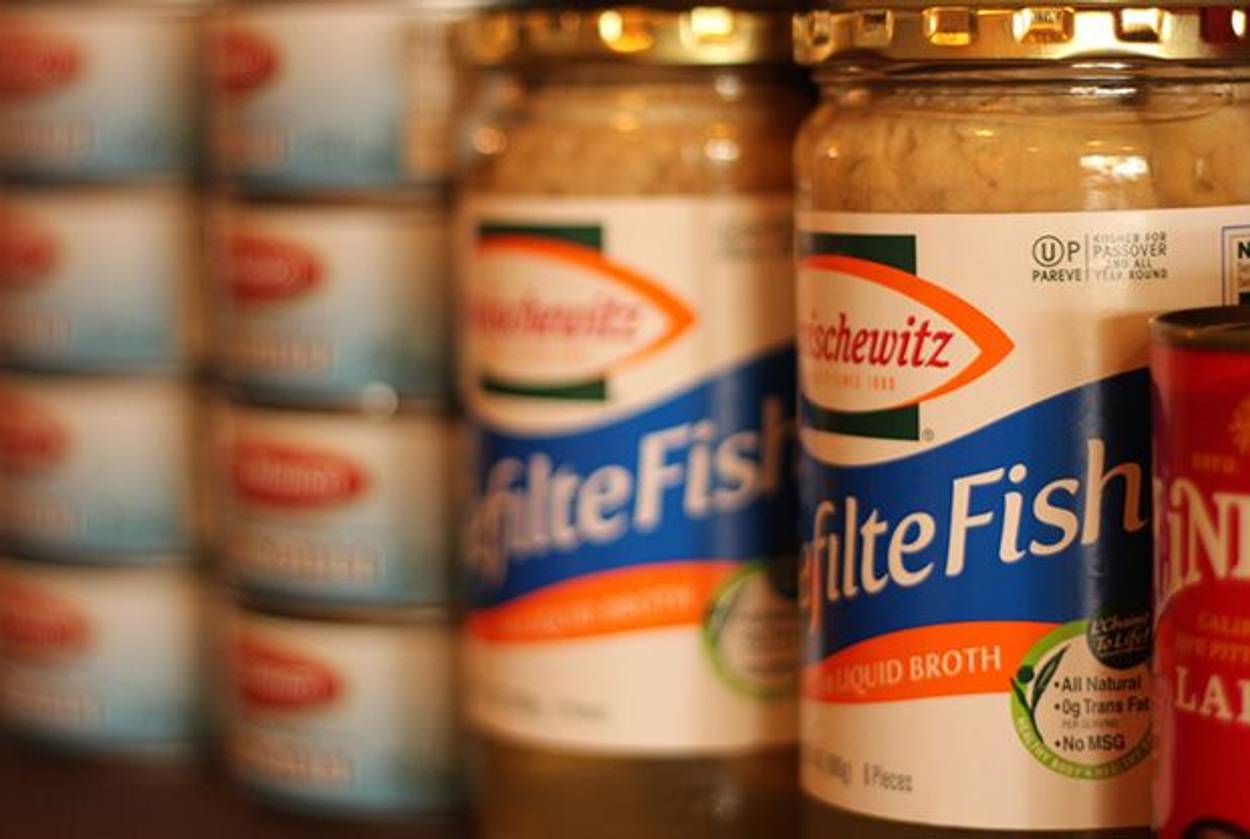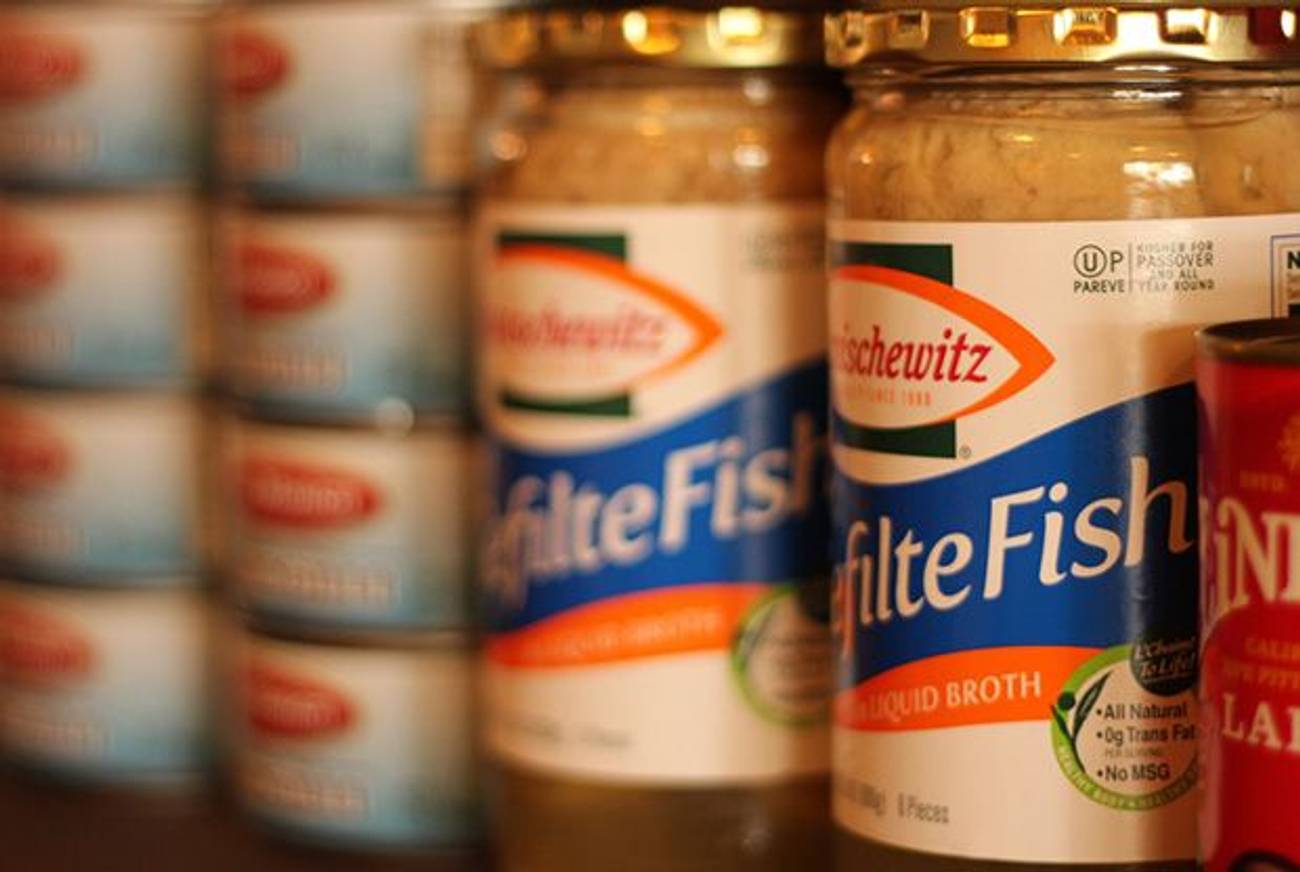Beyond Gefilte Fish
Sick of gray balls of mystery fish floating in jelly? Think outside the jar, and try a Sephardic recipe instead.




Gefilte fish is about as polarizing as a Jewish dish can be. At any given Passover Seder, there are the people who love these ground fish balls, served cold and crowned with horseradish or a floppy carrot medallion—diehards who ask for seconds, then stand around after dinner sneaking spoonfuls of “jelly” from the pan (or worse, the jar). Then there are those, myself included, who suppress a horrified nose-wrinkle while passing plates of the gray-hued stuff around the table.
I have been a gefilte-shunner my entire life. But in recent years I have softened some, or matured enough to admit that perhaps I have not given it a fair chance. That’s partly because, long before companies like Rokeach and Manischewitz entombed gefilte fish in glass jars—rendering it both convenience food and museum relic—it was a homemade dish that took real skill to prepare. There was a time in the not-too-distant past when Ashkenazic Jews were the kind of people who kept a carp swimming in the bathtub until Friday morning, when a gutsy balaboosta would kill, gut, chop, shape, and stew it into the first course of Sabbath dinner. Even if I don’t typically enjoy the end product, it is hard not to respect such culinary pluck.
But more important for those of us who don’t like the Ashkenazic staple, there is a whole world of delicious equivalents available in Sephardic cuisine. These are dishes—hailing from places like Spain, Morocco, Egypt, and Tunisia—that trade the boring, dun-colored loaves I grew up not eating for elegant fish quenelles bolstered with spices and chopped herbs and simmered in bright, flavorful sauces. So, maybe the fish balls themselves aren’t the problem—maybe we just need to broaden our culinary horizons.
***
According to Gil Marks in the Encyclopedia of Jewish Food, the inclusion of chopped fish dishes in Jewish cuisine—both Ashkenazic and Sephardic—stems from the Talmudic prohibition against “sorting” (borer) on the Sabbath. In this case, the violation refers to picking inedible bones from a piece of fish. “Since much of the fish in the Middle East was particularly bony, removing the bones before the Sabbath was a practical way of preparing it,” Marks writes. Meanwhile, Lévana Kirschenbaum, a Moroccan-native and cookbook author who owned the (now closed) gourmet kosher restaurant Lévana’s in New York City for three decades, shared a more practical explanation: “Our communities were often poor, and it was easier to extend a dish by sneaking in other cheaper ingredients, when the main expensive item like fish, poultry, or meat was ground,” she told me.
Ashkenazic gefilte fish as we recognize it today emerged from the 14th-century German practice of chopping up the flesh of freshwater fish, seasoning it, then placing it back into the skin. (Gefilte is Yiddish for “stuffed.”) The skin was then stitched up, much as one might thread a stuffed Thanksgiving turkey today, and cooked—originally roasted. “By the 16th century,” Marks writes, “the process was simplified by some Ashkenazic cooks in Germany who eliminated the tedious stuffing step,” instead forming individual balls and poaching them in a pungent broth made from fish heads and bones. Over time, different central and eastern European countries put their spins on the dish—typically using some combination of pike, carp, and whitefish—and flavoring the fish balls with sugar (in Poland) or lots of black pepper (in Lithuania).
These poached fish balls traveled with immigrants from these countries to America, where they became a fixture of the Ashkenazic-American diet—particularly on the Sabbath, and on holidays like Passover and Rosh Hashanah. Unfortunately, like many classic American dishes that traveled through the mid 20th century, it eventually eroded into a pre-packaged shell of its former self. Gefilte fish was already a questionable delicacy (even at its best, it’s still typically drab), particularly to second- and third-generation Jews who did not maintain a nostalgic connection with it. The jar simply sealed gefilte fish’s fate, rendering it little more than a punch line to a bad Jewish joke.
Lest I begin to sound like a naysayer of Ashkenazic food in general, let me profess my steadfast love for crisp potato latkes, creamy chopped liver studded with hardboiled eggs, and even the bizarre root vegetable and dried fruit stew known as tzimmes. But when it comes to fish, Sephardic cuisine, which is sourced by the waters of the Mediterranean Sea, is simply more varied and exciting. The Sephardic repertoire is awash in fish dishes, from flaky filets simmered in tart sauces (think tomato, lemon, or pomegranate), to all manner of albondigas de pescado, chopped fish balls held together with bread crumbs, rice, or, on Passover, matzoh meal. This second category of ground-and-bound Sephardic fish is quite broad, encompassing recipes that resemble Ashkenazic gefilte fish in preparation (poached), to dishes more akin to meatballs (baked or cooked in sauce) or kubbeh (fried).
In Saffron Shores: Jewish Cooking of the Southern Mediterranean, cookbook author Joyce Goldstein writes that in Tunisia, boulettes de poisson (French for “fish balls”) were made with cod, snapper, and other mild white fishes and either “fried or poached, then simmered in fish broth flavored with tomato puree.” The tomato lent both acidity and bright color to the finished dish and offset any lingering fishy flavor. Libyan Jewish cuisine has a similar recipe for fish balls in tomato sauce; that version comes additionally flavored with basil in a nod to the country’s history as a former Italian colony.
Kirschenbaum, meanwhile, serves fish balls poached in a saffron-infused broth and then topped with a tangy lemon sauce thickened with egg yolk—a traditional Moroccan recipe. “We eat fish balls all year round,” she said. “On Passover they would be part of the first course.”
Recently, things have been looking up in the world of Ashkenazic gefilte. One Brooklyn-based food company, Gefilteria, for example, started peddling a variety of artisanal takes on old-world foods, including gefilte fish. Its version (which was inspired by co-founder Jeffrey Yoskowitz’s grandmother’s recipe) is handmade from sustainably sourced fish and comes baked, not poached, which imparts a fresh, mild flavor. Gefilteria’s loaves also pop with two sunset layers of color: a creamy ivory (made from whitefish and pike) and pale coral (made from salmon and steelhead). In the course of a year, the company has managed to transform Jewish cuisine’s ugly duckling into a proverbial swan.
After tasting Gefilteria’s product, which came topped with spicy-sweet grated carrot horseradish, my allegiance to the anti-gefilte-fish camp weakened significantly. In a shocking twist of events, I even plan to bring a couple of Gefilteria’s family-sized loaves to my in-laws’ Seder this year. And yet, I hope to also convince them to try a new dish—like boulettes de poisson from the Sephardic repertoire. Because with two Seder meals to fill, Passover is the perfect time to explore the other fish in the sea.